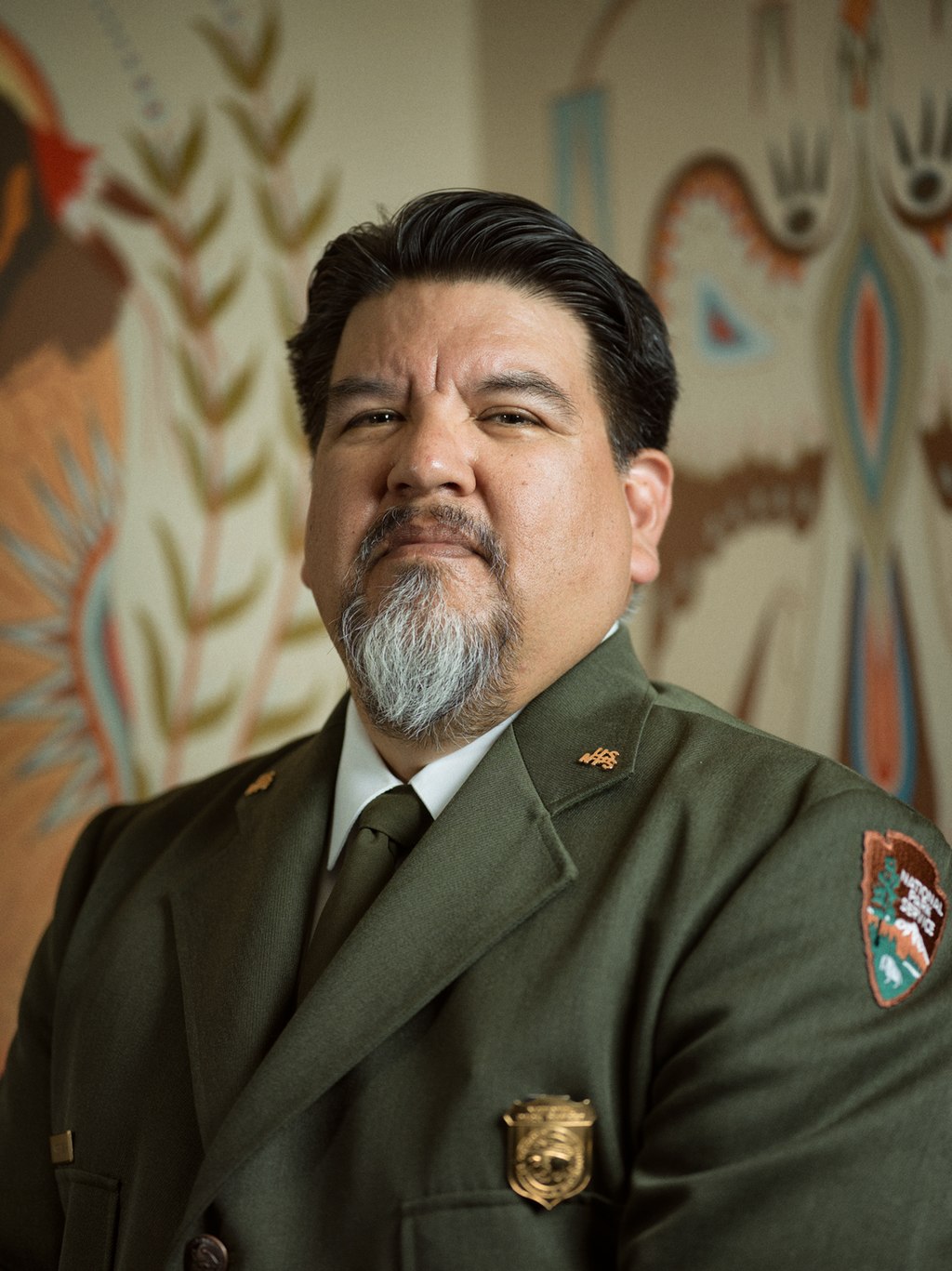
- Details
- By Levi Rickert
WASHINGTON — Last month, after Charles “Chuck” Sams III participated in a panel discussion at the National Congress of American Indians (NCAI) executive committee winter session in Washington D.C., he spent twenty minutes taking photos with admirers and well-wishers who were excited to get their picture taken with him.
As the first Native American to serve as the director of the National Parks Service, Sam — a citizen of the Confederated Tribes of Umatilla — was popular among the other Native Americans in the crowd.
With 30 years of experience in tribal and state conservation and land management, Sams was confirmed by the U.S. Senate in November 2021 to serve as director of the National Park Service.
The National Park Service is a bureau of the U.S. Department of the Interior and encompasses 424 national park sites throughout the United States, spanning 84 million acres. Among the sites are 63 national parks, 85 national monuments and others, such as national battle sites and national shorelines.
After he was done granting photographs, Sams talked to Native News Online about how his Native upbringing impacts his approach to his role and working under the first Native American to be the head of the Department of the Interior, Secretary Deb Haaland.
This interview has been edited for brevity and clarity.
How does being a tribal citizen of the Umatilla Tribes influence your decisions as the director of the National Parks Service?
Growing up on the Umatilla Indian Reservation in northeast Oregon, I felt very fortunate to have grandparents who were very steeped in their cultural traditions. And also, I grew up with the understanding that our original law said when I stood up, my sight is from an eagle, my hearing was from the owl, and my skin was from the elk.
All of that told me we have a stewardship responsibility to care for the forest. And throughout my 30-year career, that’s exactly what I’ve done around natural resource management. But that has all been influenced by the ethos I grew up with on the reservation.
How is it going now that you have had time to settle into your position?
I’ve been here just 15 months as the National Park Service Director. The staff has been wonderful. Working for Secretary Haaland as the first Native American to be the head of the Department of the Interior has been a fantastic experience. Her leadership and openness to give us the tools necessary to run our bureaus have made it an exciting time.
Whether that is around tribal consultation, co-management, co-stewardship, and understanding how we can bring ecological knowledge, traditional ecological knowledge, and Native knowledge to the forefront and all of our planning because, at the National Parks Service with 424 parks, it’s critically important that those voices actually are sitting at the table as we manage those spaces.
Before your confirmation, the National Parks Service’s director position was unfilled for over five years–dating back to the Obama administration. How are you bringing stability to the National Parks Service? What has been your goal?
I laid out seven different initiatives when I came on board.
First and foremost was to ensure that we provide support to the staff in the field. They work hard, and they’re one of the most dedicated staff you will find in the federal workforce.
The “green and the gray” — our rangers — are on the frontlines daily. They love their jobs. There is an issue: They haven’t always received the necessary funding. I’m happy to say we’ve seen significant increases over the last two years. This last year alone, we’ve got a 6.7% increase in our base budget that is going to ensure that we’re paying our staff what they deserve, that they’re getting adequate housing, and also that they have the tools that they need to preserve the great American outdoors and build more sustainability within our system.
More Stories Like This
Native News Weekly (August 25, 2024): D.C. BriefsUS Presidents in Their Own Words Concerning American Indians
Federal Court Dismisses Challenge to NY Indigenous Mascot Ban
Sen. Angus King Warns of ‘Whitewashing’ History in National Parks Under Trump Administration
Final Call for Donations as CRYP’s 2025 Toy Drive Nears the Finish Line
Help us defend tribal sovereignty.
At Native News Online, our mission is rooted in telling the stories that strengthen sovereignty and uplift Indigenous voices — not just at year’s end, but every single day.
Because of your generosity last year, we were able to keep our reporters on the ground in tribal communities, at national gatherings and in the halls of Congress — covering the issues that matter most to Indian Country: sovereignty, culture, education, health and economic opportunity.
That support sustained us through a tough year in 2025. Now, as we look to the year ahead, we need your help right now to ensure warrior journalism remains strong — reporting that defends tribal sovereignty, amplifies Native truth, and holds power accountable.
 The stakes couldn't be higher. Your support keeps Native voices heard, Native stories told and Native sovereignty defended.
The stakes couldn't be higher. Your support keeps Native voices heard, Native stories told and Native sovereignty defended.
Stand with Warrior Journalism today.
Levi Rickert (Potawatomi), Editor & Publisher


